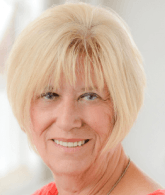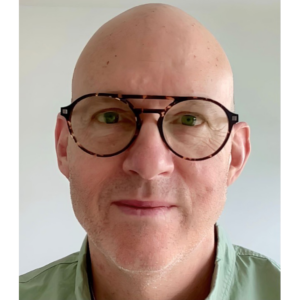One-on-one with…Robert Van Dyk
Regardless of delays in its implementation, compliance with the mandates of the Affordable Healthcare Act (ACA) demands that long-term care organizations prepare now. Van Dyk Health Care, a family-owned company with three locations in northern New Jersey, is actively installing the technologies and educating staff so they can be ahead of the compliance curve.
CEO/President Robert Van Dyk has invested in the data technologies to ensure quality of care and reduce rehospitalizations. Van Dyk, a past chairman of the American Health Care Association, spoke with Long-Term Living Managing Editor Sandra Hoban on how the company his father, Marvin, founded 60 years ago is moving forward to meet and fulfill the challenges of the ACA.
TELL US ABOUT VAN DYK HEALTH CARE AND ITS “WE CARE MISSION.”
Van Dyk Health Care is comprised of two skilled nursing and post-acute care facilities, one assisted living residence, a rehab company and the HeartWays cardiac rehabilitation program. We have almost 500 employees at our locations.
As a family-run business, we embrace our employees as part of the family. WE CARE is our commitment to caring for everyone we are involved with: staff, residents, vendors and people in the community. My responsibility to my patients and staff comes first. I believe that we can’t take care of our patients unless we care for the staff that provides them with direct care.
WHAT HAVE YOU DONE TO ENSURE A SMOOTH TRANSITION WHEN THE ACA DEADLINES ARRIVE?
I think the ACA will have a greater focus on the operator’s ability to cache and interpret accurate data. We’re all looking at new ways to collect data that is accurate and usable.
At our facilities, we’re implementing new software that actually reassesses every patient at the end of every shift. In other words, if a patient’s condition warrants a change in the care plan, that information is passed on to the next shift, which will carry out the newly revised care plan. If, for some reason, the changes aren’t implemented, that will be noted at the end of the shift along with any other changes in condition.
Having the right software is important to us because our goal as post-acute care providers is to continually monitor our patients. With regularly updated information, we can head off small problems before they become more serious.
HOW ARE YOU MEETING THE MANDATE TO REDUCE REHOSPITALIZATIONS?
I get a report on every readmission that occurs. The nurses explain what happened to cause it. We monitor every readmission and every physician to determine whether it was preventable. While we’re investing in data collection, our organization is to invest in human resources as well. Our goal is to reduce hospital admissions and help people return home safely.
Daylight IQ™, from COMS Interactive, helps us collect data including the rates of hospital readmission, Medicare referrals from various sources and other data in real time to help us compare ourselves with other facilities in the area and with CMS’ published data. We also utilize PointRight's OnPoint Rehospitalization Insights reports to monitor our rehospitalizations using a case-mix adjusted formula.
To be effective, we are hiring nurses and aides with more advanced skills, not only to operate systems but to provide better care.
WHAT IS YOUR VIEW ON HOW WASHINGTON IS HANDLING THE ACA?
So much discussion in Washington is on post-acute and skilled care. However, there is no recognition that organizations, such as Van Dyk, are making the investments in systems and staff to make the ACA successful. We’re not asking for more money. Yet we’re not getting the recognition for what we are doing to make that happen.
Because hospitals are shortening stays and transferring patients to post-acute settings, our residents arrive less stable and require more care. Hospitals’ reimbursement rates don’t change. They get paid by the diagnosis, whether the stay is three days or five. On the other hand, post-acute providers get reimbursed about $400 a day to care for a patient with the same problems and care needs.
For the ACA to be successfully implemented, my message to Washington is that the post-acute sector is the most efficient and cost-effective provider in the healthcare industry. In my opinion, this is where the government and the Centers for Medicare & Medicaid should be infusing money.
WHAT CARE PROGRAMS WILL THE NEW GENERATION OF SENIOR NEED?
Younger people will be in need of post-acute care because of cardiac events and an increase in their need for hip and knee replacements. We have programs in place for cardiac and orthopedic rehabilitation. For example, a person who had a heart attack will not have a protracted in-patient hospital stay since the goal is to get the patient out and into post-acute care quickly.
Cardiac issues are one of the highest areas that trigger hospital readmissions. Van Dyk developed the HeartWays program to meet this need to provide post-acute cardiac care. As a result of HeartWays, we’re finding the need for us to develop an infusion therapy program to take care of a sicker individual. To help our patients recover, we are hiring nurse from hospitals that have cardiac training.
HOW HAS LONG-TERM CARE CHANGED SINCE VAN DYK’S DOORS OPENED 60 YEARS AGO?
First, what hasn’t changed is that we are still passionate about what we do. Our employees are committed to our philosophy of care. Some staff members have been with us 30, 40 and even 50 years. Basically, the answer to how things have changed is what I believe Chevy or Cadillac said in an ad years ago: We’re not your grandfather’s Chevy anymore. We no longer look like the nursing home my father started 60 years ago. If my dad had 40–50 admissions a year, it was a lot. Last month our 96-bed skilled facility had 106 admissions in just one month. We now provide the same level of care hospitals were providing 10–15 years ago.
Our profession has evolved into becoming post-acute care providers and an important part of the healthcare continuum. We partner with hospitals to ensure lower hospital readmission rates and better outcomes for our patients.
Van Dyk is no longer your grandfather’s nursing home. We are now a step-down unit of the acute care hospital.

Sandra Hoban was on I Advance Senior Care / Long-Term Living’s editorial staff for 17 years. She is one of the country’s longest-serving senior care journalists. Before joining Long-Term Living, she was a member of the promotions department at Advanstar Communications. In addition to her editorial experience, Sandi has served past roles in print and broadcast advertising as a traffic and talent coordinator.
Related Articles
Topics: Articles , Executive Leadership , Leadership , Regulatory Compliance , Staffing











